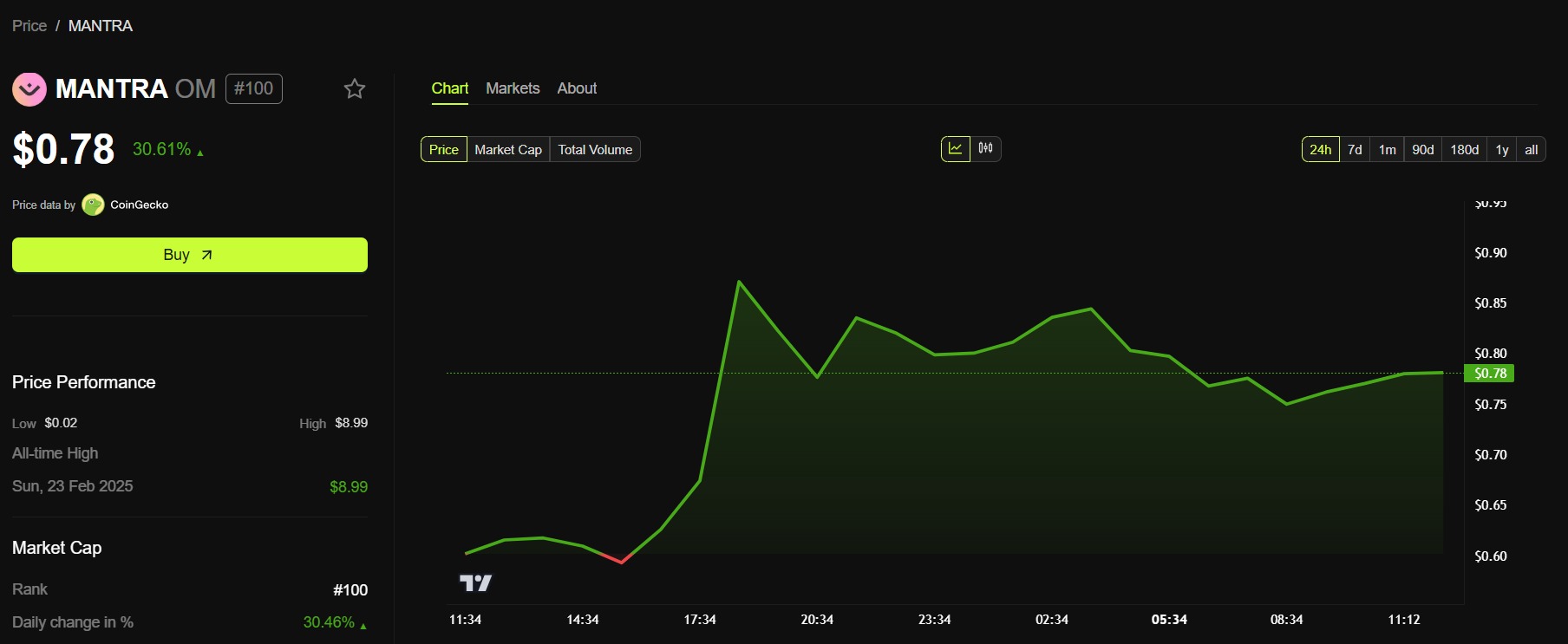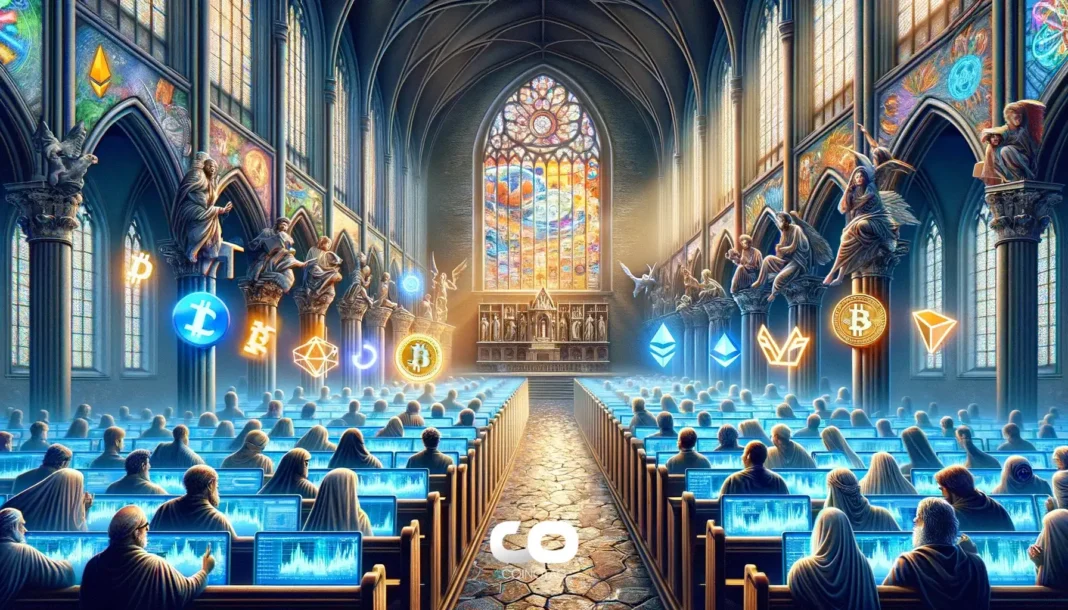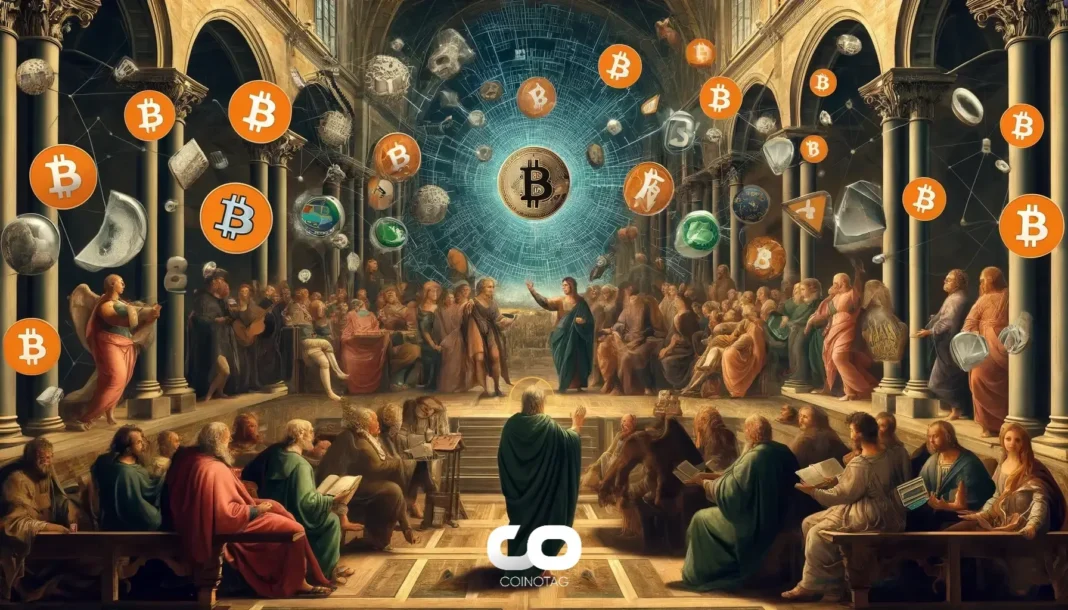-
After a tumultuous period, the OM token has seen a resurgence, driven by CEO John Patrick Mullin’s proposal to burn team tokens to regain investor trust.
-
Despite skepticism from industry observers, Mullin emphasizes that the initial burn will only affect his token allocation, highlighting a commitment to accountability.
-
In a notable statement, Mullin emphasized the team’s transparency, asserting that they did not liquidate any OM tokens during the price collapse.
Mantra CEO John Patrick Mullin proposes burning team OM tokens to restore trust as the token recovers post-crash, adding transparency to regain investor confidence.
Will OM Token Burn Restore Trust? CEO Mullin’s Bold Proposal
Mullin revealed his plans in a recent post on X (formerly Twitter), stating, “I’m planning to burn all of my team tokens, and when we turn it around, the community and investors can decide if I have earned it back.” This transparent approach aims to bolster investor confidence following a dramatic price drop.
He explained that all team allocations, totaling 300 million OM (16.88% of the 1.78 billion total supply), remain locked under a vesting schedule until April 2027. After this initial period, the tokens will begin to vest gradually, with complete vesting projected by October 2029. This structured timeline is designed to reassure investors of the team’s long-term commitment.
However, not everyone shares Mullin’s optimism. Ran Neuner, founder of Crypto Banter, has voiced concerns over the potential implications of the token burn. He cautioned, “This would be a mistake. We want teams that are highly incentivized.” Neuner believes that burning the tokens may undermine the team’s motivation rather than restore trust.
Mullin clarified that the proposed burn would initially apply only to his personal share of tokens, which amounts to 772,000 OM. He stated, “I was only suggesting my allocation to start with,” aiming to lead by example without endangering the team’s overall incentive structure.
Furthermore, Mullin suggested an alternative intiatitive where burned tokens could be allocated to a community-controlled dispersal mechanism, reinforcing his intention to keep community interests at heart. He added, “Regardless, we keep building.”
In addition to the token burn, Mullin announced plans for a comprehensive post-mortem report to address the specifics behind the OM token price collapse. This will be followed by details on a proposed buyback program and supply burn initiative, further showcasing an earnest effort to redirect the trajectory of the project.
The price of OM has not only begun to recover but surged by 30% within 24 hours after the announcement, indicating a potential turnaround. Following its catastrophic drop from $6.3 to below $0.5, which wiped out over $5.5 billion in market capitalization, the recent climb offers a glimmer of hope for investors.
Importantly, during a recent interview, Mullin confirmed the team’s commitment to not trading any OM tokens during the crash. He reiterated, “We don’t have leverage position on exchanges. We don’t do that.” This level of disclosure demonstrates a commitment to transparency amidst rising accusations regarding potential wrongdoing.
Moreover, Mullin acknowledged that the Mantra Chain Association has engaged in over-the-counter (OTC) transactions totaling between $25-$30 million specifically to fund business operations, clarifying that these tokens also remain locked with forthcoming vesting periods.
“None of the OTC sales that we’ve had have actually been executed yet. So **the tokens are all still locked,”** Mullin claimed, seeking to further underpin their operational integrity and protect investor interests.

Meanwhile, as the broader market reacts to these developments, investors are keenly monitoring the situation. Will Mullin’s strategic proposal serve as a catalyst for regaining trust in the Mantra project? Time will tell as both the community and market movements unfold in response to these bold initiatives.
Conclusion
This proposal by Mullin to burn the team’s OM tokens illustrates a proactive approach to navigating the aftermath of a market downturn. With a combination of transparency and future-focused initiatives, he aims to rebuild trust with investors. As the OM token continues to show signs of recovery, the commitment from leadership will be crucial in shaping its future, highlighting the importance of accountability and investor engagement in the cryptocurrency landscape.







